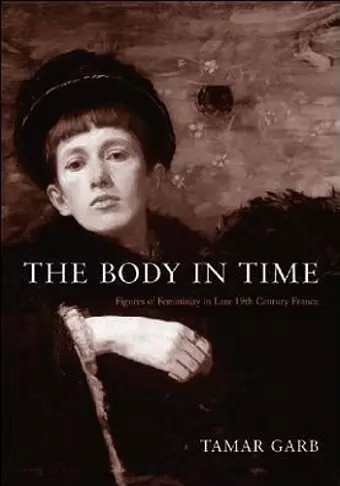The Body in Time
Figures of Femininity in Late Nineteenth-Century France
Format:Paperback
Publisher:University of Washington Press
Published:16th Jul '08
Currently unavailable, and unfortunately no date known when it will be back

Looks at Degas's representation of ballet dancers and at the transformation in portraiture heralded by the "new woman."
Looks at two different genres in relation to the construction of femininity in late nineteenth-century France - Degas' representation of ballet dancers and the transforming tradition of female portraiture.
The Body in Time looks at two different genres in relation to the construction of femininity in late nineteenth-century France: Degas's representation of ballet dancers and the transforming tradition of female portraiture. Class, gender, power, and agency are at stake in both arenas, but they play themselves out in different ways via different pictorial languages.
Degas's depictions of anonymous young female ballerinas at the Paris Opera reflect his fascination with the physical exertions and prosaic setting of the dancer's sexualized body. Unlike the standard Romantic depictions of the ballerina, Degas's dancers are anonymous spread-legged workers on public display. Female portraiture and self-portraiture, in contrast, depicted the unique and the distinctive: privileged women, self-assured individuals transgressing gender conventions.
Focusing on Degas's representation of the dancer, Tamar Garb examines the development of Degas's oeuvre from its early Realist documentary ambitions to the abstracted Symbolist renderings of the feminine as cypher in his later works. She argues that despite the apparent depletion of social significance and specificity, Degas's later works remain deeply enmeshed in contemporary gendered ways of viewing and experiencing art and life.
Garb also looks at the transformation in the genre of portraiture heralded by the “new woman,” examining the historical expectations of female portraiture and demonstrating how these expectations are challenged by new notions of female autonomy and interiority. Women artists such as Anna Klumpke, Rosa Bonheur, and Anna Bilinska deployed the language of Realism in their own self-representation.
The figure of femininity remained central to the personal, political, and pictorial imperatives of artists across the spectrum of modern aesthetics. Gender and genre intersect throughout this book to show how these categories mutually impact one another.
"It is fluidly written and engaging . . . there is much to like in this book. Garb's insights on the femme nouvelle, in particular, are noteworthy, and scholars of gender and modern France, or of gender and modern art, will find them worth reading."
* H-NISBN: 9780295987934
Dimensions: unknown
Weight: 249g
96 pages